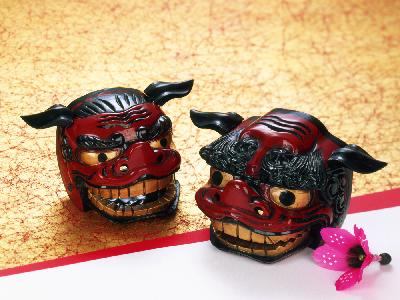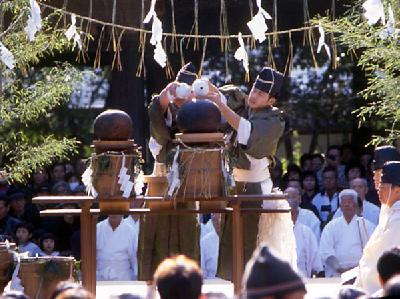|
The Shishi-mai dance, which was imported from China, spread throughout Japan and has many variations depending on the area.
The shishi (lion) dances to lively music. It is said that there are two kinds of shishi-mai dance: one, unlike its Chinese counterpart, is the 'furyu' shishi-mai, which can only house a single performer instead of a line of men.
In Japan, there are many styles of shishi-mai, with no two styles resembling each other, including several different versions of the 'furyu' and 'kagura' dances.
The head of most shishi is made of wood, but some are made of rice paper or styrofoam. The old Chinese version of the dance originated long ago, while the current version originated in the Qing dynasty to become a competitive sport.
Shishi-mai is performed during every kind of event, including Chinese New Year and the opening ceremonies of new shops. Shishi-mai teams exist in every town.
The shishi (lion) dances to lively music. It is said that there are two kinds of shishi-mai dance: one, unlike its Chinese counterpart, is the 'furyu' shishi-mai, which can only house a single performer instead of a line of men.
In Japan, there are many styles of shishi-mai, with no two styles resembling each other, including several different versions of the 'furyu' and 'kagura' dances.
The head of most shishi is made of wood, but some are made of rice paper or styrofoam. The old Chinese version of the dance originated long ago, while the current version originated in the Qing dynasty to become a competitive sport.
Shishi-mai is performed during every kind of event, including Chinese New Year and the opening ceremonies of new shops. Shishi-mai teams exist in every town.
| [+ADDRESS] | 
|














